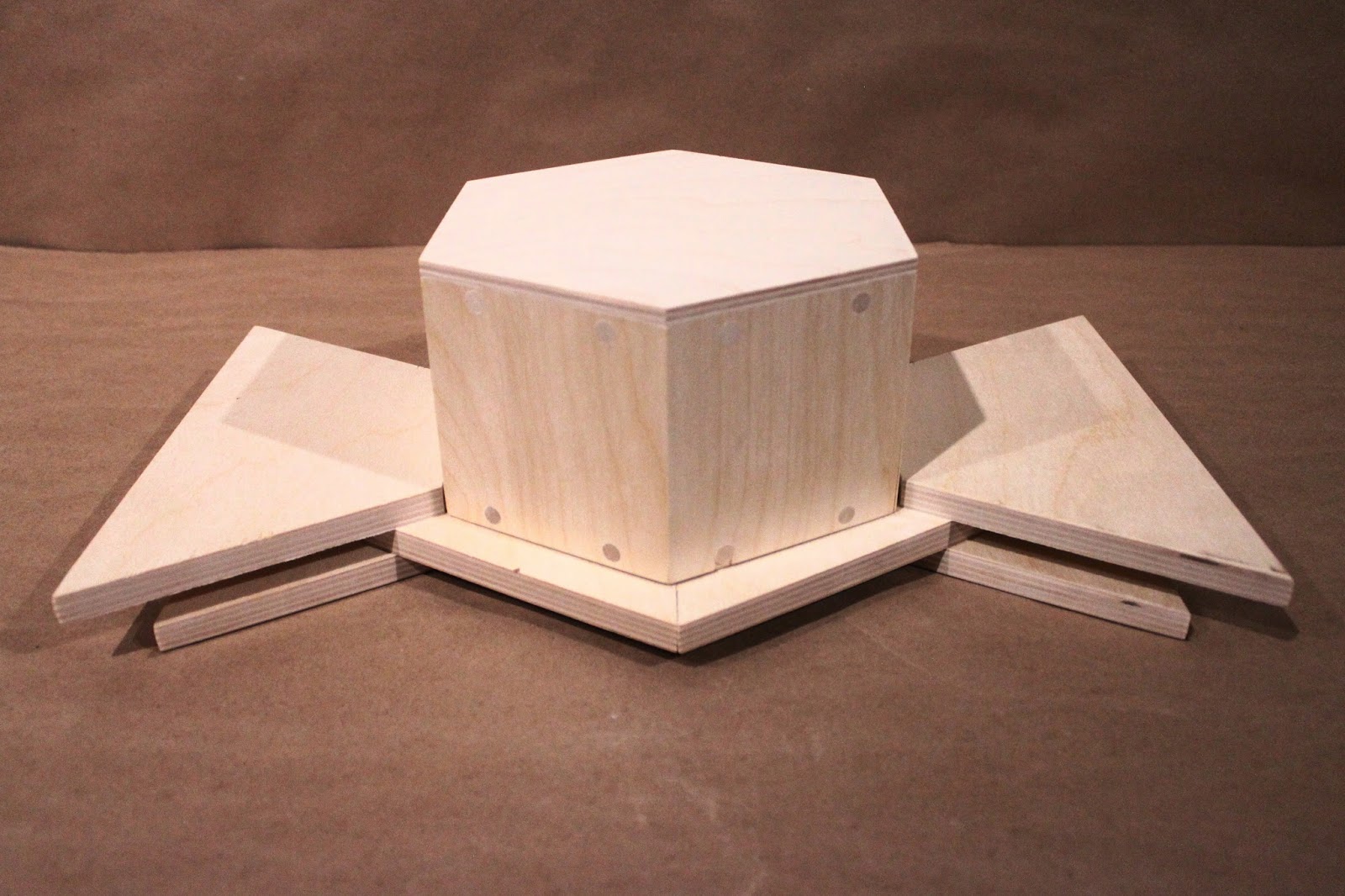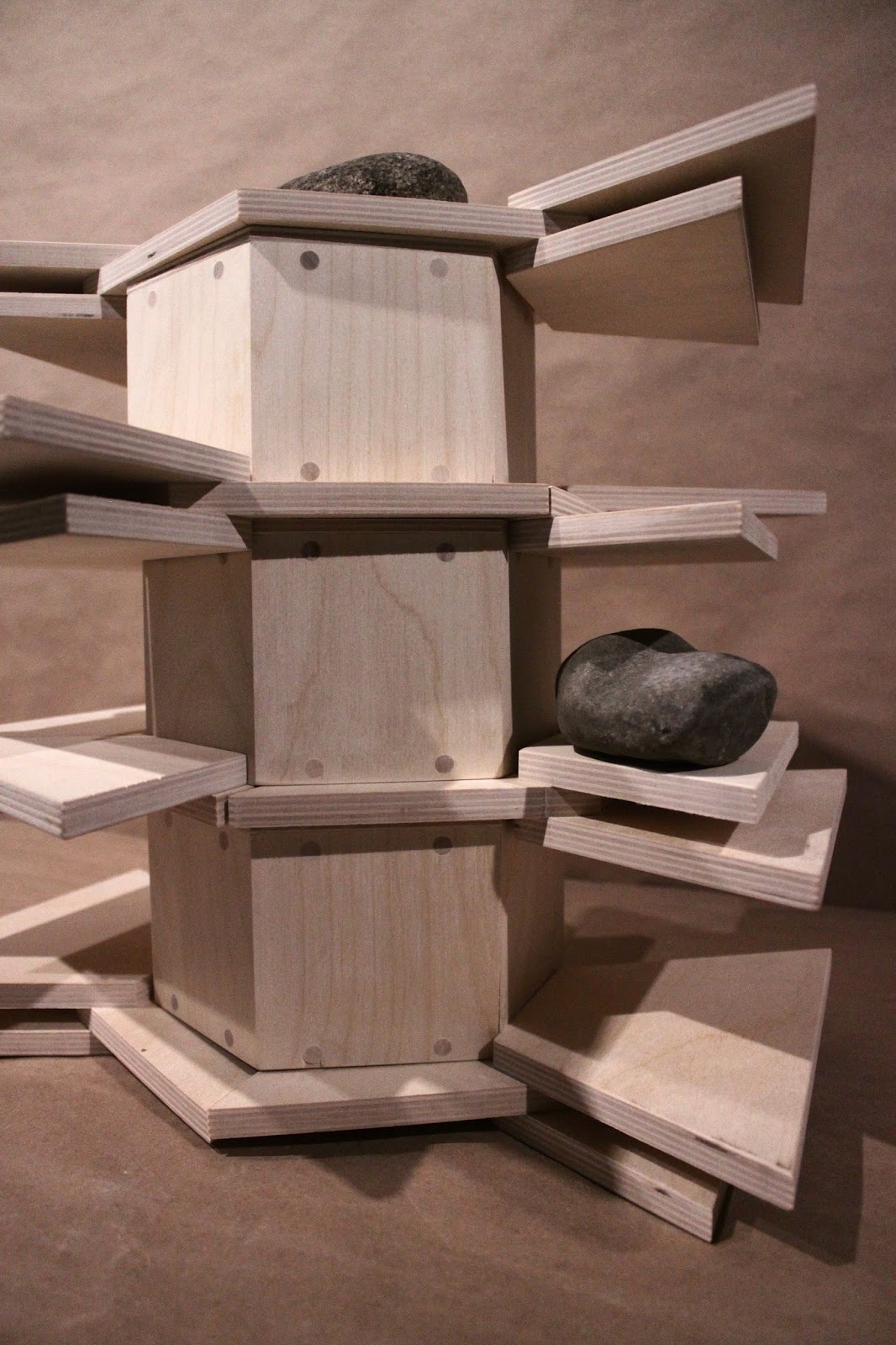A lengthy compilation of a semester's worth of work in Spatial Dynamics--featuring: Corn!
At the beginning of the semester, we were all required to choose natural objects to study and explore. I chose a small Indian corn because I was drawn to its three distinct textures of the kernels, the cob, and leaf shell.
We began our journey with some research, brainstorming, and orthographic drawings.
These orthographic drawings then had to translate into clay. Here I am trying to figure out how to use the clay tools and wet/dryness of the clay to make both rounded and flaky forms. I used a subtractive method once I had my two base forms of a basic cylinder attached to a prism.
End result and hand for scale!
The next step was to create a piece by using cross sections of our object. I measured out aluminum sheets that I cut, grinded, drilled and sand blasted and positioned them on a wooden dowel standing upright. I did this to suggest the corn's original orientation growing in a corn stalk. It was a pleasant surprise to find my piece now embodied the whimsical quality of a cloud staircase.
Step three utilized skewers. We were assigned to create a structure inspired by/reflecting our object. I played around with string knots and tubing as fasteners to find a module shape, then branched from there. I was most satisfied with this hexagonal module, which I felt was sturdy enough and also round enough.
After fiddling around with staircasing connections, I came up with this abstracted corn cob.
My piece was rather large, so here's a video to better capture the structure.
The final exploration was much broader. We were asked to give our object "life" again by capturing something about its growing process and its connotations. Throughout the process, I gradually came to appreciate (and respect to a point) the systematic growth of corn, which became my focus of the last project. I compared the cob to a modular shelving unit, which I designed to be customizable so it could grow several directions. I continued the hexagonal structure.
My completed set. With the time I had, I was able to make three shelves in total, which is the abridged version of the story I wanted to tell. The wood is baltic birch plywood, sanded to be smooth to the touch. There are circular details made of dowels in drilled holes on the faces of the hexagon.
A possible base for stacking.
When stacked, the trapezoids form shelves, whose length depends on which side is flipped up or down.
The most important lesson I learned while making this was the value of jigs to make uniform and consistent parts. I also learned about using a table saw to make mitered cuts for my hexagon core.































